
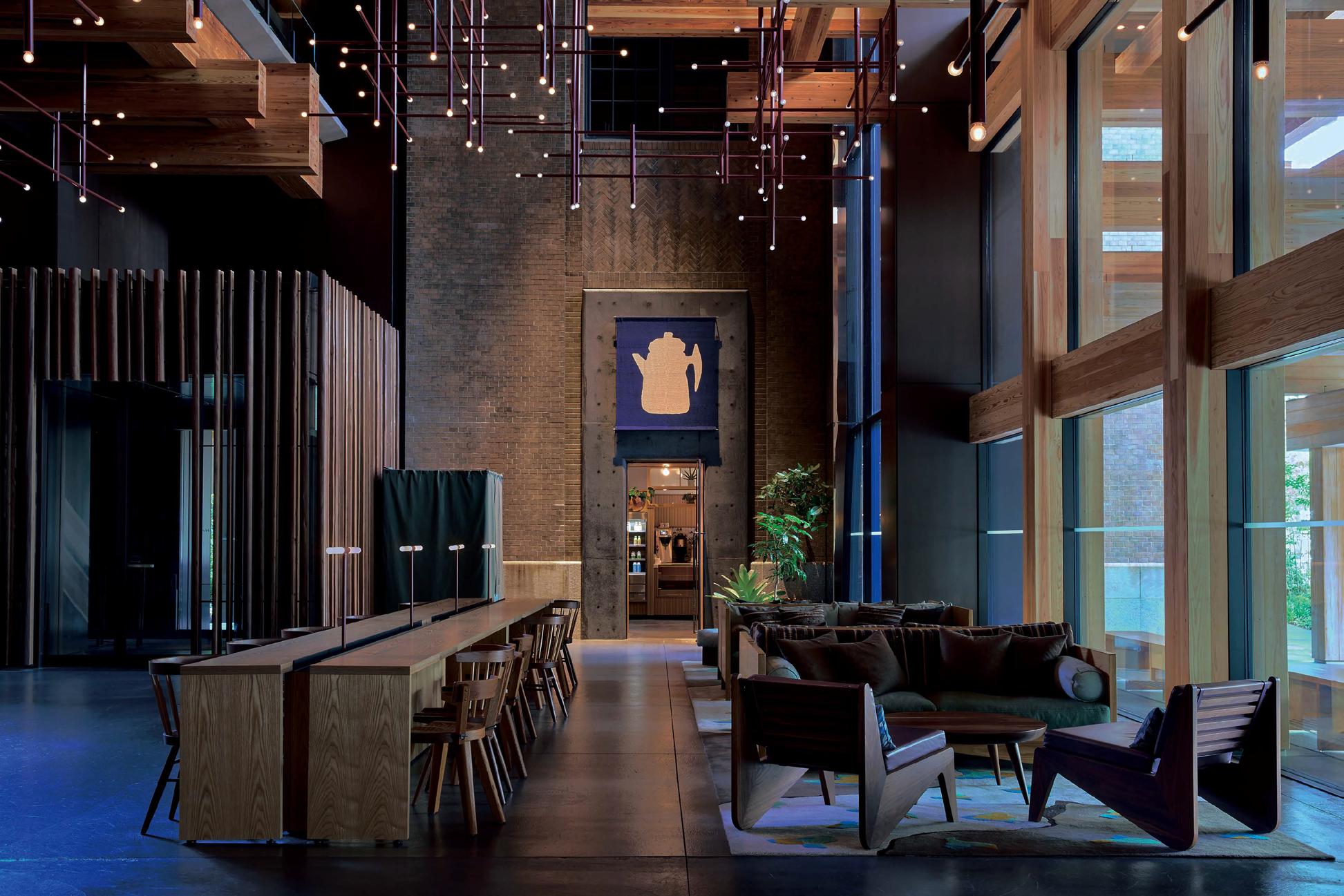





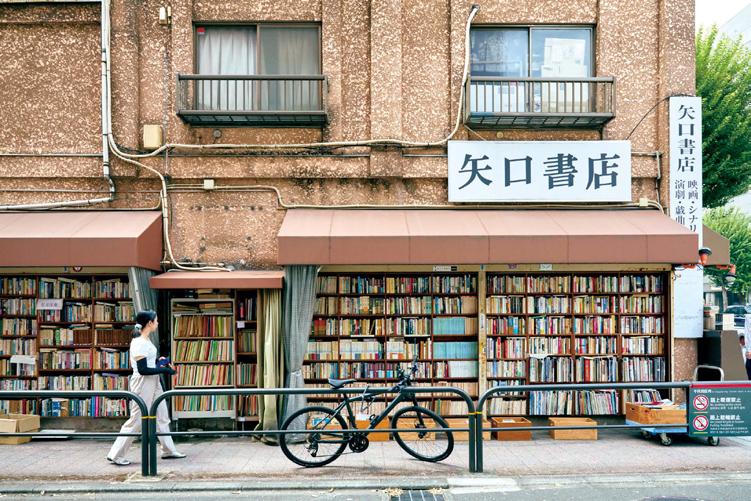

A mere 10-minute walk from the glistening glass-and-steel towers and luxury hotels of Umeda, Osaka’s business and shopping hub (and the home of Time Out Market), Nakatsu looks like a remnant of a different era. A retro shopping street winds its way through a compact district made up of an incongruous variety of small wooden houses, mom-and-pop shops and ancient shrines set along narrow, cluttered alleys enlivened by often chaotic clusters of potted plants. That frozen-in-time look, however, belies a beehive of creative activity. One of the city’s most ethnically diverse communities, Nakatsu boasts a fast-growing crop of quirky boutiques, tiny upstart eateries, stand bars and cafés, plus a makeshift space underneath the
Based on local insights and insider expertise gleaned through a comprehensive network of on-theground writers and editors, Time Out’s annual survey examines city neighbourhoods across the planet based on livability metrics including culture, community, nightlife, food and drink, street life and that hard-todefine sense of ‘nowness’, ranking the vibiest districts in the world.
Check out all our Tokyo and Osaka neighbourhood guides now GO →

Eating is front of mind for most visitors to Japan, and for many of us locals too. No wonder – this country is surely the world’s greatest food destination, where culinary heritage and a deepseated respect for the seasons combine with impeccable service and obsessive attention to detail. Get ready to eat your way through Japan with our most delicious guide yet.

‘Chefs who put the ingredients and traditions distinctive to Japan’s thoroughly seasonal cuisine front and centre are flourishing outside of the big cities, and regional cultures of fermentation and preservation are making an impact on global gastronomy.’
–Takanori Nakamura, Japan Academy Chair, World’s 50 Best Restaurants

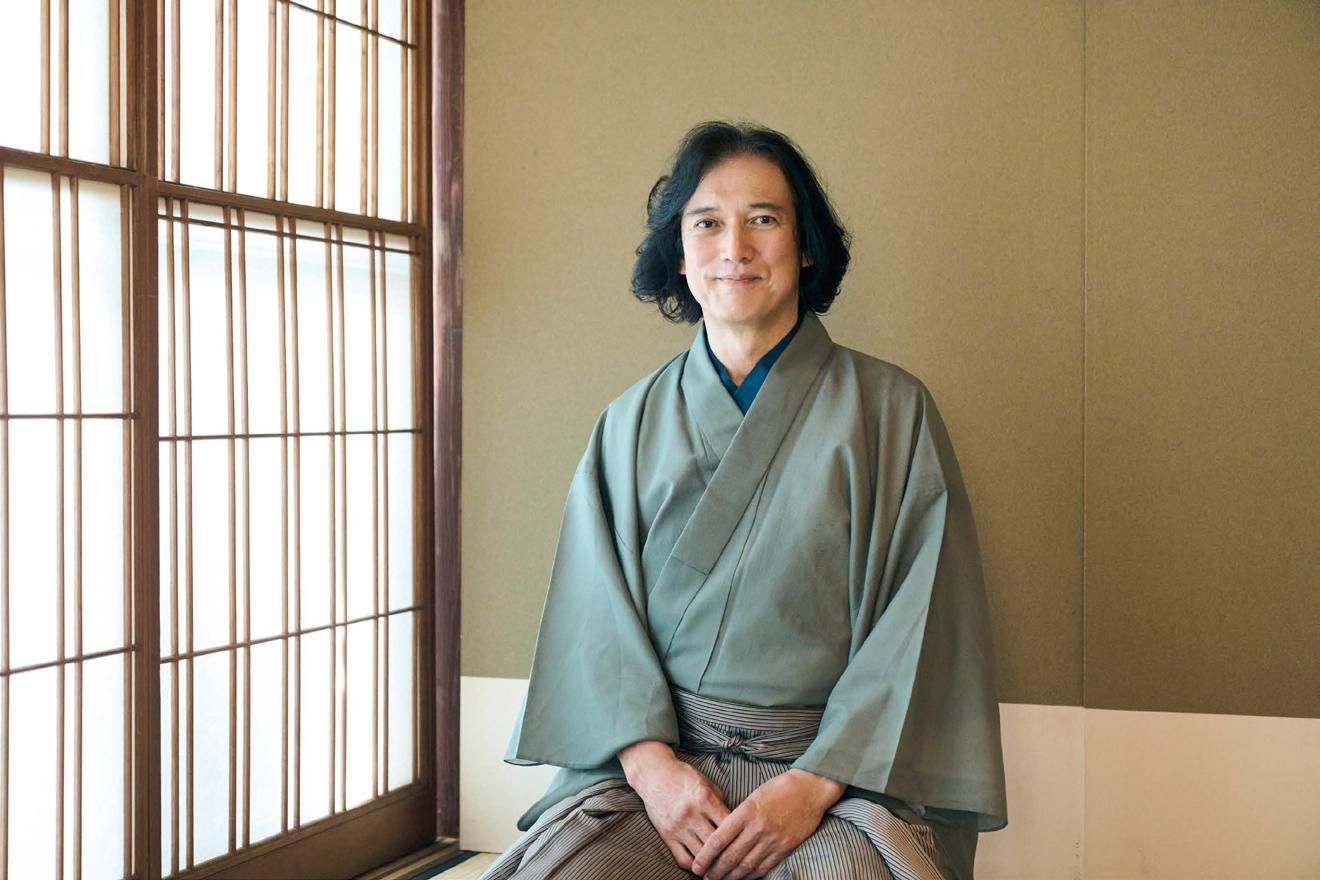
Takanori Nakamura, Japan academy chair for the World’s 50 Best, picks his favourite destination restaurants in the country
Having served as Japan academy chair for the World’s 50 Best Restaurants since 2013, food journalist Takanori Nakamura has had a close-up view of the revolution in global fine dining that kicked off with Denmark’s Noma being named the world’s no. 1 restaurant in 2010. ‘This has been a hugely important time in the history of food, he recounts. ‘We’ve seen the France-centred gastronomic orthodoxy crumble, and with it a re-evaluation of local cuisines all over the world. That includes the rise of establishments like Peru’s Central, voted the world’s best restaurant in 2023.’
The reordering of the culinary world has allowed regional Japanese cuisines to shine, too. Today, an increasing number of international gourmands visiting the country are no longer content with eating their way through Tokyo and Kyoto, setting their sights instead on rural gems like the four establishments featured on the right. These destination restaurants were selected by Nakamura for their ‘worldclass gastronomic offerings and extremely high potential for reaching even greater heights’ – and for still flying relatively under the radar. Book them before the word gets out.
Chef Shota Itoi is still in his early thirties, but already conjures up extremely refined French cuisine that draws on the beautiful landscapes surrounding his restaurant. His collaborations with the Noguchi Naohiko Sake Institute next door deserve to be highlighted, too.

The food is rooted in Japanese tradition, but the cooking techniques and combinations are incredibly innovative. Getting to taste ingredients available only here is a big part of the restaurant’s charm.
Fine dining in a former elementary school – Auberge ‘Eaufeu’ is a restaurant and accommodation facility that serves as a hub for discerning visitors to Ishikawa.
à Lo-48 Kanagasomachi, Komatsu, Ishikawa. eaufeu.jp.



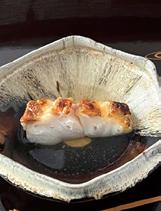
One of Japan’s best examples of a local gastronomic success story, the restaurant skilfully incorporates arts and crafts into the dining experience.
It’s hard to resist Chef Fukuyama’s thoughtful hospitality. Dining in Japan doesn’t get any better than this.
Respiración is a modern Spanish restaurant where the culinary heritage of the Iberian Peninsula meets the traditions of the Japan Sea region. Ingredients such as Kanazawa seafood and heirloom Kaga vegetables form the basis for dishes that express the history and culture of the Ishikawa area.
à67 Bakuromachi, Kanazawa, Ishikawa. respiracion.jp.
Kappo Shintaku NIIGATA
A venerable kappo (‘cut and cook’) establishment founded in 1867, Shintaku showcases the vibrant culinary culture of Murakami, the northernmost part of Niigata prefecture. It serves dishes that recreate Murakami’s ingredients and local cuisine.
à 3-38 Komachi, Murakami, Niigata. murakami-sintaku.com.

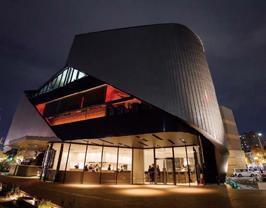

Chef Goh Fukuyama is a regular on the Asia’s 50 Best Restaurants list. At his signature establishment, all guests are invited to share one large table, with the chef and his staff putting the finishing touches on each plate in front of diners’ eyes.
à 010 Bldg 1F, 1-4-17 Sumiyoshi, Hakata, Fukuoka. instagram.com/goh_f/
Chef Yusuke Takada of Osaka’s La Cime on what makes an unforgettable Japanese gourmet experience


Nicknamed ‘the kitchen of Japan’, Osaka is well recognised as one of the world’s most delicious cities. And while casual delights like takoyaki and udon remain the main draw for many visiting foodies, the city’s reputation as a hub for high-end gastronomy has skyrocketed in recent years – in 2024, it was second only to Kyoto among the Asian cities with the most Michelin-starred restaurants per capita.
Osaka’s rise as a fine dining destination is music to the ears of chef Yusuke Takada, whose restaurant La Cime is as of 2025 the city’s only representative on the World’s 50 Best Restaurants list. We caught up with the trailblazing chef for a quick chat about how restaurants in Japan can stand out in the hyper-competitive world of global gourmet.

Leave an impression
‘Reflect on the past, illuminate the present.’ At La Cime, Yusuke Takada lets this ancient Japanese saying guide his efforts to bring classical French cooking techniques to bear on undervalued ingredients and condiments from his native Amami Oshima and throughout western Japan.
The chef’s aim is to conjure up culinary experiences that stay with the diner long after the last bite. For Takada, appealing to all five senses holds the key to such memorable meals. ‘In our age of instantly available information, you have to reach out to people on a sensory level if you want to be remembered,’ he says.
‘I think aromas are particularly important [in gastronomy], since they can be imbued with spiritual and emotional meaning. With the right combinations of sensory stimuli, you can connect with guests from all over the world.’
Takada is also a big advocate of challenging cuisine. ‘People these days are too used to soft foods,’ he says. ‘But you really should be moving your jaw [while eating]. Chewing not only makes flavours more apparent; it stimulates your brain, too.’ Many of the dishes served at La Cime dare diners to get out their comfort zone and rediscover the joys of texture.
Not content with simply serving elaborate meals, Takada is out to redefine dining as an experience. ‘Everyone tends to overexplain food these days,’ he says. ‘I like to leave the thinking up to my guests.’

The city that gave the world takoyaki and okonomiyaki, Osaka more than deserves its status as Japan’s street eats capital. But there’s another side to the city’s food culture, too – quieter, deeper, more profoundly delicious. Here’s our three-step guide to unlocking Osaka’s gastronomic secrets.
Heirloom vegetables are an inconspicuous but fundamental part of Osaka cuisine. At Hirano Farm, an urban farm surrounded by project housing in suburban Suita, traditional greens like Suita kuwai arrowhead and Kema cucumber live on to convey the city’s agricultural legacy to new generations. More and more Osaka chefs these days choose local when planning drinks pairings for their menus. Forwardlooking restaurants may carry Osaka-made wine from the likes of Katashimo, a 111-year-old winery preserving the legacy of a historic grape-growing region.

Farm 3-11-20 Esakacho, Suita. instagram.com/hirano.farm_suita.


In Japanese cuisine, spices are traditionally used to bring out, rather than alter, the flavours of the other ingredients. That subtle approach to seasoning informs everything at Yamatsu Tsujita in Sakai, a specialist in domestic spices founded in 1902 and now run by fourth-generation owner and spice evangelist Hiroyuki Tsujita. Whether he’s upholding the century-old history of Sakai’s indigenous hawk-claw chilli species or stone-grinding wild sansho peppers for his spice blends, Tsujita works tirelessly to protect and promote the more piquant components of Osaka’s cuisine.
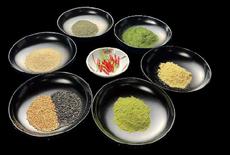


Osaka is a city that knows its way around a blade. Over the past 600 years, some of Japan’s finest silverware – from samurai swords to the knives used by Michelinstarred chefs – has been forged by the blacksmiths of Sakai, the traditional knife district south of central Osaka.
Chef Yusuke Takada of the two-Michelinstarred La Cime, for instance, sources his blades exclusively from Baba Cutlery Works, a purveyor of kitchen knives with intricate lacquered handles. Combining unbeatable durability with beauty, these premium specimens are a cut above.
Baba Cutlery Works 3-3-22 Shukuyacho-Higashi, Sakai, Sakai. baba-hamono.com
Find out more online – check out Time Out Tokyo and Osaka GO →
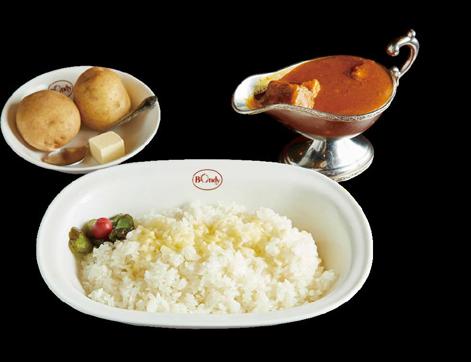
WESTERN-STYLE CURRY
East meets West in an iconic Tokyo dish with over a century of pedigree.
Where to eat it: Bondy Jimbocho

The granddaddy of them all, smack in the middle of the city’s most curry-forward neighbourhood. àbondy.co.jp
JUMBO COOK
The overseer of the Kappabashi kitchenware district since 1982.
Where to find him: Niimi Yoshokkiten
A tableware and kitchen tools wholesaler that carries everything from the latest professional equipment to curious knickknacks that work nicely as souvenirs. niimi1907.com

TAIYAKI
Stuffed with sweet fillings, this fish-shaped cake is a joy to munch on year round.
Where to eat it: Yanagiya
Get the quintessential Tokyo dessert from this Ningyocho icon –but come prepared to queue for at least 30 minutes.
àsites.google.com/view/yanagiya-official
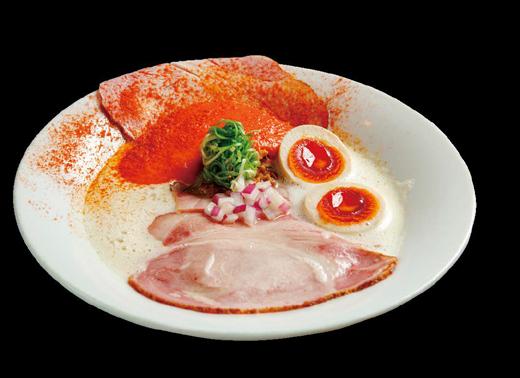
Which city is Japan’s Our ultimate East-against-West battle for go head to head in such crucial categories
TORI PAITAN

This rapidly evolving style of decadently creamy chicken soup has become a fixture in the capital’s ramen scene.
Where to eat it: Ramen Afro Beats
The leader in the Paitan clubhouse; yet another winner from the Beats team. àinstagram.com/ramenafrobeats

true food capital? culinary supremacy sees Osaka and Tokyo as curry and traditional sweets

TAKAIDA BLACK
Higashi-Osaka’s signature style is notorious for its pitch-black soup.
Where to eat it:
Menya Joroku Namba
Joroku’s elevated version combines a chicken and pork broth with chicken-based flavour oil and a rich soy sauce blend. àjouroku.blog.fc2.com
SPEND ON EATING OUT
DARUMA MINISTER
Dotonbori’s snarling, stickwielding chef warns visitors against a cardinal culinary sin: double-dipping your kushikatsu (deep-fried meat, fish or vegetable skewers).
Where to find him:
Kushikatsu Daruma Dotonbori
Founded in 1929 and still going strong, Daruma is a go-to for this essential Osaka delicacy. àkushikatu-daruma.com/location/ doutonbori
SPICE CURRY
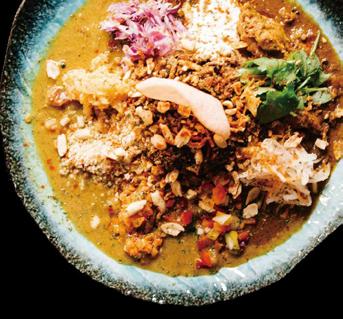
A hyper-diverse genre born out of Osakans’ penchant for piquant experimentation.
Where to eat it: Spice Curry Tairiku
One of the city’s leading curry houses conjures up memorable mixtures with domestic dashi broth and a cosmopolitan selection of spices. àinstagram.com/spicecurrytairiku.osaka


ICE CANDY
Nobody gets through an Osaka summer without a taste of this dainty popsicle.
Where to eat it: Hokkyoku
Purveyor of iced treats in the Ebisubashisuji shopping arcade for three generations. àhokkyoku.jp
What’s hot across the country right now
dos and don’ts in Japan 3
Don’t: Talk loudly or make calls on public transit
We all have those moments when we’re very excited and feel the need to broadcast this to the world. A crowded train or bus in Japan, however, is not the place to do so. Both talking on the phone and loud conversations on public transport are rather frowned upon.
Don’t: Forget to take off your toilet slippers
Possibly the only cultural faux pas that might make a Japanese person scream in horror. Those slippers located inside the bathroom are really only supposed to be worn there.
Do: Seek out the recycling bins
Separating trash is big in Japan –real big. Be sure to stick your trash in the right bin, whether it’s the one for combustible items such as paper scraps, noncombustibles like plastic cups, or recyclables like plastic bottles.

Find out more online – check out Time Out Tokyo and Osaka GO →
One of international art collective teamLab’s largest permanent museums in Japan opened in Kyoto on October 7. It features more than 50 artworks, including ‘Massless Amorphous Sculpture’, a piece that’s never been exhibited in Japan before.
à21-5 Higashi-Kujo Higashi-Iwamotocho, Minami, Kyoto. teamlab.art/e/kyoto.


TOKYO | Music Reggae / Dub Club Open
01 02 03 04
This Shinjuku club is open nightly and is the place to go for genres such as reggae and dub. Open provides an electric atmosphere and has a huge sound system that’s more than capable of kicking out a good level of bass.
àDaiichi Sanko Bldg B1F, 2-5-15 Shinjuku, Shinjuku, Tokyo. tinyurl.com/TOTopen.
AICHI | Art
Aichi Triennale 2025
Turning the cities of Nagoya and Seto into an arena for discoveries in cutting-edge contemporary art while inviting reflection on the role art can play in society, the Aichi Triennale features contributions from a globespanning cast of 62 artists and collectives. àUntil November 30. aichitriennale.jp/en.
TOKYO | Shopping
Newoman Takanawa
Fashion house CFCL, ‘select shop’ granddaddy Beams’s Cultuart and a plethora of other on-trend shops, eateries and cultural spaces occupy Tokyo’s premier yen-spending destination of 2025, which is set to get even bigger in spring 2026.
à2-21-1 Takanawa, Minato, Tokyo. newoman.jp/takanawa/.



TOKYO | Bars Sodden Frog
Two-Michelin-starred restaurant Florilège makes its first foray into the capital’s bar scene with Sodden Frog, where house-made ingredients from fresh herbs and veggies to fruit-infused spirits meet ultra-elevated bar bites.
àAzabudai Hills Garden Plaza D 3F, 5-10-7 Toranomon, Minato, Tokyo. instagram.com/soddenfrog.

GUNMA | Things to do Hotokuji Temple’s ‘Floor Maples’
A Zen sanctuary dating back to around 1450, Hotokuji is now most famed for its ‘floor maples’ – the reflection of brilliant red momiji leaves on the temple’s polished floors at the end of autumn. Go at night for the spectacular light-up.
àUntil December 7. 5-1608 Kawauchicho, Kiryu, Gunma. houtokuji.jp.


TOKYO | Shopping
The Jojo World
The world’s first permanent store dedicated to JoJo’s Bizarre Adventure is much more than a gift shop, with the only-here merch complemented by a themed café and quirky interactive experiences. àShibuya Parco 6F, 15-1 Udagawacho, Shibuya, Tokyo. bandainamco-am.co.jp/ official_shop/jojo.
HOKKAIDO | Museums
Retro Space Saka Hall
Kazutaka Saka’s dizzying and bizarre collection of paraphernalia from decades past – think everything from cameras and vintage mags to syringes and booze – fills the entirety of this biscuit factory turned private museum in Sapporo. à7-3-22 Nijuyonken 3-Jo, Nishi, Sapporo, Hokkaido. facebook.com/rsp.saka. 07
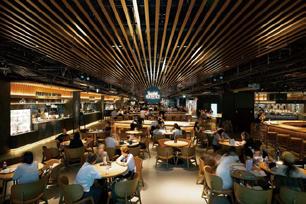
OSAKA | Restaurants
Time Out Market Osaka
The first of its kind in Asia, Time Out Market Osaka brings the best of the city under one roof, all curated by Time Out editors. With award-winning chefs, beloved local institutions and rising culinary stars, it offers a sampling of the Kansai region’s vibrant dining scene.

àGrand Green Osaka South Bldg B1F, 5-54 Ofukacho, Kita, Osaka. timeout.com/ time-out-market-osaka.

KYOTO | Restaurants Future Train Kyoto Diner & Cafe
Incorporating an upcycled Thunderbird train carriage perched on top of an abandoned elevated railway line, Future Train is part mind-bending art space, part eatery dedicated to Kyoto-inspired dishes. àUmekoji High Line, 3-7 Kankijicho, Shimogyo, Kyoto. futuretrain.jp.
Relentlessly energetic poppunk foursome Atarashii Gakko! on their tenth anniversary and what Japanese food they can’t live without
Fusing high-octane dance moves and plenty of head banging with an arresting blend of retro pop, rap and punk – all performed while dressed in their signature school uniforms – four-piece Atarashii Gakko! look far too fresh to be celebrating a decade in showbiz. But that’s exactly where they stand in 2025, having completed a 33-city world tour and played Coachella just last year. Now they’re on our cover, too – and have a couple of strong opinions on Japanese food.
How are you feeling about hitting 10 years as a band?
It’s a big responsibility. Back when we started we were just doing our thing, thinking we’d be happy if our music would speak to, like, every tenth person out there. But now that our fanbase has grown, we’ve realised that the things we create could change somebody’s life. We approach shows and songwriting differently now.
You’ve made playing with cultural expectations a trademark, right?
We hate doing things by the book, and want to give our all in every performance. The first time we played in the US we incorporated all these references to Japanese school rules and activities, and the crowd loved it. Overseas audiences have real respect for Japanese culture and styles. We’d like to keep drawing on traditional Japanese elements and making them our own.

What Japanese food do you miss while on tour?
White rice. One time in Europe, we didn’t eat any Japanese food at all for 11 days, and all four of us eventually started shaking because we wanted to have white rice so bad. We’ve had a rice cooker on our tour bus ever since and use it twice daily [all laugh].
If Atarashii Gakko! was a food, what dish would you be?
Oden. We’re all different, but swim around in the same pot. Oh, and our shows are hotter than the hottest slice of daikon.
10 can’t-miss eateries at
, the city’s most on-trend culinary hotspot

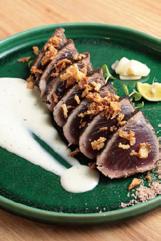
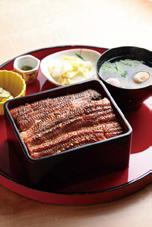
Wash down piquant pub grub like artisanal sausages or fish and chips with one of the 15 beers on tap at the Grand Green Osaka outpost of Osaka’s premier craft brewery.
Craft Beer Base Leaf. North Bldg 2F. 11am11pm (last orders 10pm) daily.
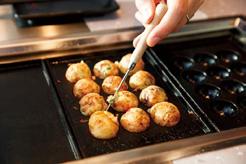
Doing takoyaki with a twist, this shop lets you cook your octopus dumplings yourself, on a purpose-made griddle mounted into your table. (Don’t worry: the staff will show you how.)
Takonotetsu. North Bldg 2F. 11am-11pm (last orders for food 10.15pm, for drinks 10.30pm)
Skipjack tuna seared over burning straw is the smoky speciality at this snug bistro. Pair the fish with a choice sip from their plentiful selection of domestic whisky and wine.
àWarayaki Bistro W. North Bldg 2F. 11am-11pm (last orders for food 10.15pm, for drinks 10.30pm) daily.

Unafuji does its eel crisp, aromatic and lathered in a mildly sweet sauce. Savour the potent delicacy straight from the grill with a park view here.
àSumiyaki Unafuji. South Bldg 3F. 11am-11pm (last orders 9pm) daily.
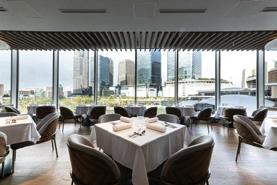

Seriously impressive views over the greenery of Umekita Park further elevate the sophisticated cuisine at this standout Italian restaurant.
Brianza Osaka. South Bldg 3F. 11am-3.30pm (last orders 2pm), 5pm-11pm (9pm) daily.
Robust coffee, thick pancakes, custard pudding and other Japanese coffee shop essentials from a local institution that’s been keeping Osakans well caffeinated since 1934.
àMarufuku The Coffee Parlour. South Bldg 1F. 11am-9pm daily.



Stock up on plump rice balls and natural wine for a picnic right outside in the park, or pair your onigiri with a mellow brew courtesy of Portland Coffee Roasters.
Boo boo boo. Umekita Park North Park. 11am8pm daily.
Top-value seafood, jovial chefs and an unpretentious, welcoming setting –Sawamura makes the joys of omakase sushi eminently accessible.
àSushi Sawamura. South Bldg 3F. 11am-2pm (last orders 1pm), 5pm-11pm (9pm) daily.
Venerated Kitahama pâtisserie Gokan’s Grand Green Osaka offshoot invites you to pair fine Japanese fruits with creamy custard pudding. Be sure to ask for a terrace seat when it’s nice out.
àGokan Parloir. South Bldg 2F. 11am-9pm daily.
Set yourself up for a leisurely day in Umekita Park with a picnic set from this lawnside café that takes pride in using organic farm-to-table ingredients.
à Talks Cafe & Bar. Umekita Park South Park. 9am-10pm daily.
